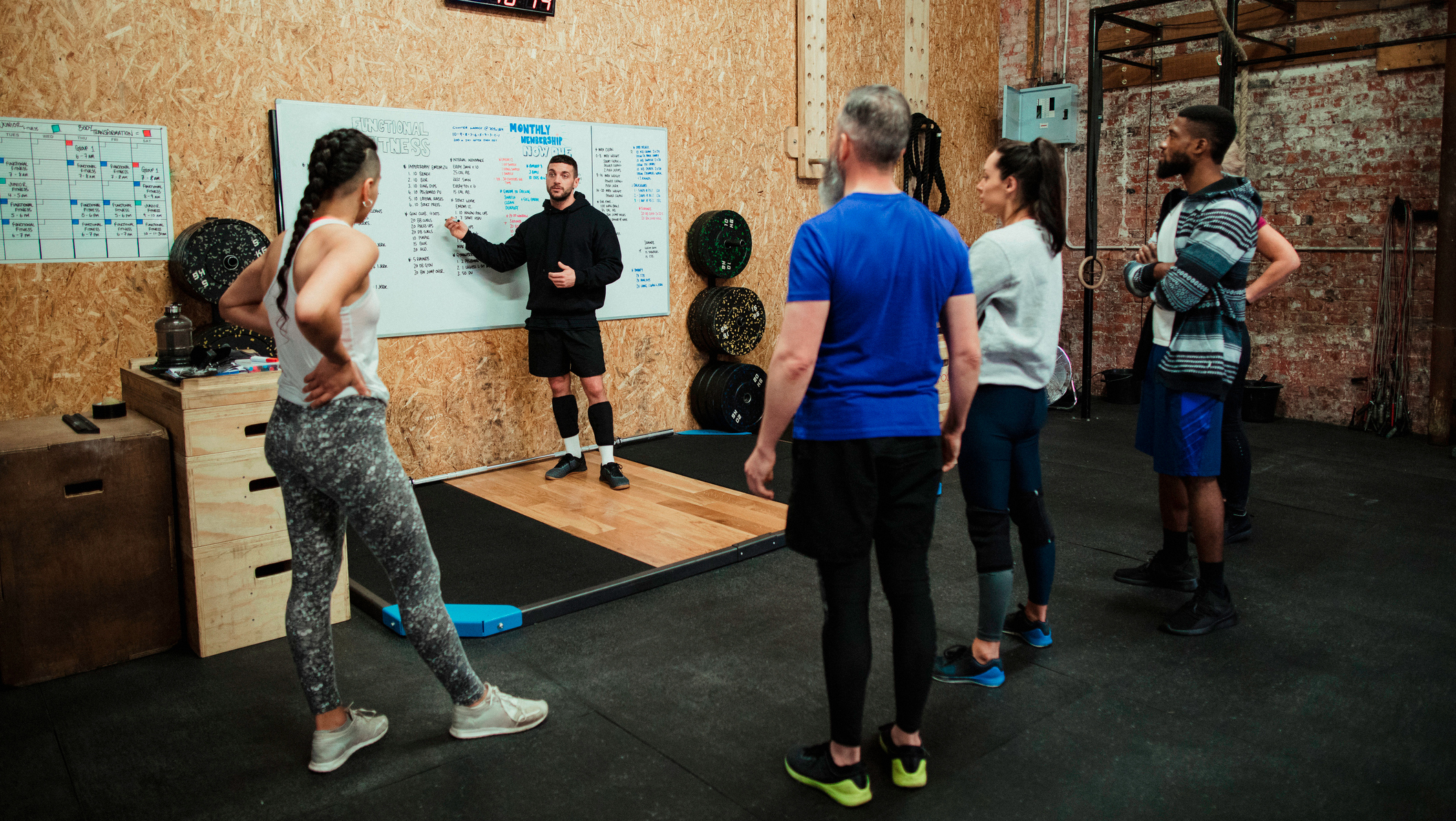The UK’s Fittest Woman Explains CrossFit For Beginners And Shares Her Top Tips
Get your head around this training method with top tips, insider advice and a beginner’s workout to try

You can’t watch the CrossFit Games without being impressed by the competitors’ physical prowess. It’s a standard of strength and all-round fitness very few will ever attain—but that doesn’t mean CrossFit has nothing to offer you and me.
In fact, the training method and the sport are designed to suit all ages and abilities. For instance, the annual CrossFit Open includes easier options for every workout so everyone can take part whatever their experience or what equipment they have available.
Case in point: Jen Muir, WIT Fitness athlete and the UK’s Fittest Woman of 2023, who only started CrossFit training during the COVID-19 lockdowns; and Jen Muir’s mother.
Muir had experience in competitive swimming, triathlon and powerlifting which gave her a headstart on the strength and endurance fronts, but she still had to learn most of the movements from scratch, beginning in her garage before joining her local CrossFit gym (known as a box).
Muir’s mother had a different starting point. “My mum is 57 and, honestly, had never done any exercise in her life,” says Muir. “It just wasn’t for her. She’d never done sports, she had a really high-stress job and it was never a priority in her life.
“Now she’s retired she sees it as a priority, so she joined a CrossFit box in February and she goes three times a week—she absolutely loves it.
“There are so many movements that she can’t do and won’t ever do, but everything is scaled and adapted, so there’s always a different option.
“It’s such a good training style and the methodology behind it is so good that it’s genuinely for everyone. A class is only an hour long, but you’re getting your strength work, conditioning work and accessories in. You’re in and out within an hour and you’ve achieved so much in that time—I think it’s brilliant.”
With this set of experiences to draw on, we asked Muir for more advice and tips for CrossFit beginners.
What’s the best way to get started with CrossFit?
There are a lot of new movements, skills and terms to learn when you start CrossFit, so Muir recommends joining a CrossFit box.
“It’s hard to pick everything up and understand it by yourself,” says Muir. “The best thing you can do is join a box, go to the classes and just ask questions. Use the coaches to get the knowledge that you need.”
If you prefer to start at home, however, try these home CrossFit workouts from Muir to get a taste of what to expect.
How many days a week should you do CrossFit as a beginner?
CrossFit training is intense, so start slow and resist the urge to dive into the deep end with six sessions a week.
“When someone new is going to join our gym, we would say to them, ‘Try three times a week, and see how your body recovers and adapts to that’,” says Muir. “CrossFit is really taxing because you’re touching on every domain—strength, endurance, everything.”
For some, three workouts will sound like too much of a commitment, although others may find they get the CrossFit bug and want to go more often. Try to resist this urge in the early days, not least because if you attend sessions half recovered you won’t get as much out of the training.
CrossFit For Beginners Workout
If you’re a gym regular who wants to get a sense of what’s in store, Muir recommends this CrossFit workout, which made an impression on her.
“In powerlifting, nothing goes overhead, so it’s all legs and bench press,” Muir says. “Then I remember trying one of the CrossFit workouts called DT.” She pulls a face that makes it clear this was a shock to the system. The moral of the story is, even if you’re an accomplished powerlifter, CrossFit will find a way to challenge you.
DT
Five rounds for time:
- Deadlift x12
- Hang power clean x9
- Push jerk x6
“For time” is a common workout format where you need to complete it as quickly as possible, but it’s essential you don’t cheat on your form—CrossFit abides by strict movement standards. The exercise names above are linked to CrossFit’s official form demonstrations on YouTube.
The listed weight for this workout is a 155lb/70kg barbell for men and a 105lb/50kg barbell for women, but of course you should adjust the weight and even the equipment to match your level. Using dumbbells, for instance, dials down the difficulty significantly.
“You can do DT with just a barbell, with dumbbells, kettlebells—you can do any kind of variation. It’s a good one because you can do it with minimal equipment but it’s a tough workout.”
If you’re completely new to exercise, or returning after a long lay-off, try this beginner CrossFit workout instead. It’s a scaled-down, low-impact version of CrossFit Open workout 23.1.
Sign up for workout ideas, training advice, reviews of the latest gear and more.

Harry covers news, reviews and features for Coach, Fit&Well and Live Science. With over a decade of training experience, he has tried everything from powerlifting to gymnastics, cardio to CrossFit, all in a bid to find fun ways of building a healthy, functional body.
